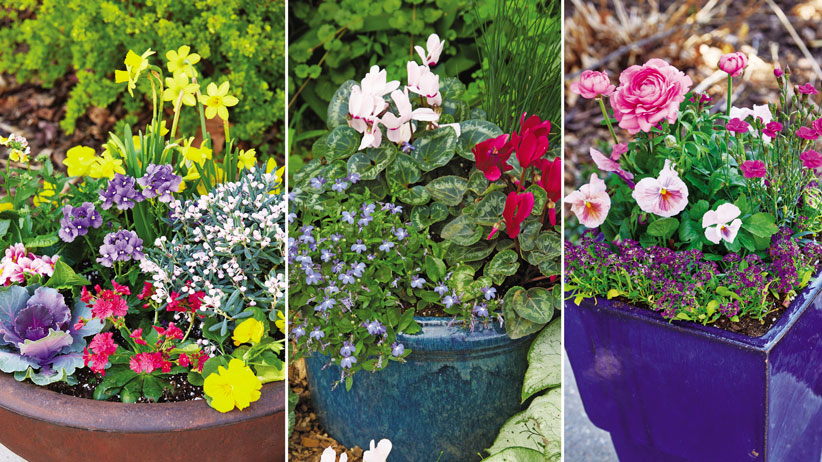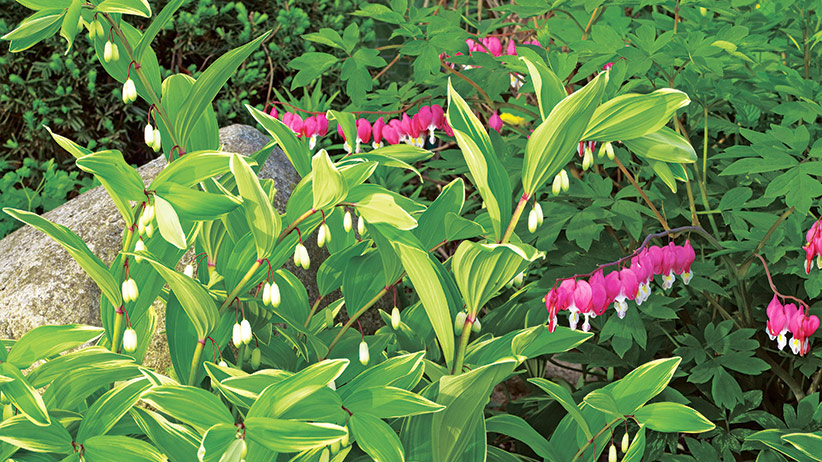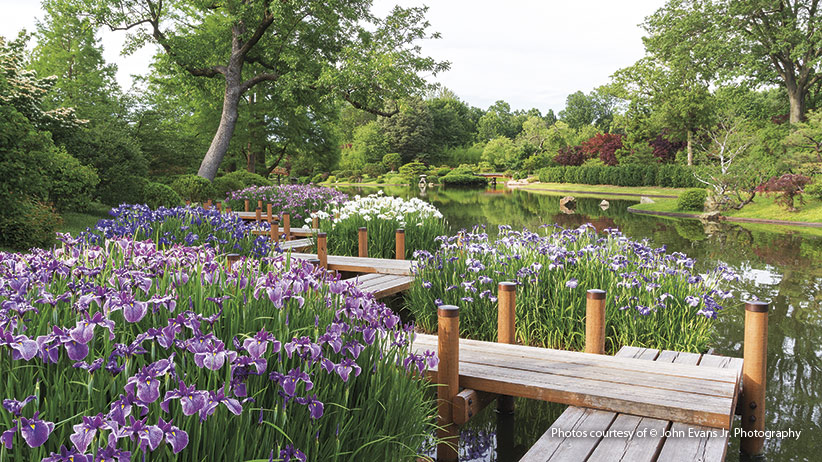
If you'd like to create a Japanese garden in your backyard but aren't sure where to begin, start with some inspiration from the Missouri Botanic Garden's beautiful Japanese Garden, called Seiwa-en, which means “Garden of pure, clear harmony and peace." It was opened in 1977 and covers 14 acres, making it one of the biggest in North America. The garden was designed by Koichi Kawana who was careful to stay true to Japanese garden tradition. He included features such as a lake, traditional bridges, lanterns and stones, among other characteristics. But just because this is a big public garden doesn't mean you can't bring home a few ideas to use in your own yard. Here's what Ben Chu, the horticulture supervisor for Seiwa-en, suggests:
Add water to your Japanese Garden
The 4-acre lake in Seiwa-en (above) is an important part of this type of traditional Japanese garden design but a water feature or pond would work for a backyard. The Yatsuhashi, or eight-plank bridge, at the edge of the lake was inspired by an ancient poem. Its zig-zagging pattern helps you explore the water’s edge and gets you up close to the Japanese iris (Iris ensata).
Add stone to your Japanese Garden
Some early examples of Japanese garden style are very simple and include just stone, a few shrubs and lawn. While the style has become more complex over time, stone is still a vital element. In Japanese gardens, stone stands for stability, strength and longevity. And when they're set with care, they can help a garden look like it's been there for a very long time.
The type of stone you choose isn't as important as its size. Ben says that most often people choose ones that are too small. Japanese gardens are a simplification or reduction of the natural environment created to fit the space you have. Think of the stone as a mountain landscape in miniature and choose stones that will really make an impact in the space where they'll be sitting.
Stone placement tips
- On a practical note, stones are large and heavy so it's a lot easier to get these in the garden before you start planting. Not sure which way to place the stone? If it's stratified, or has layers or bands of color (often in subtle shades), set the stone horizontal to the ground. Placing it vertically allows water to seep into the layers which over time will cause cracking and chipping.
- When you're figuring out where to place the stone, step back and look at it from places where you’ll see it most—the patio, kitchen window, any spot where you frequent — to make sure it's in a spot where you can really appreciate its beauty.
- Make sure that the stone's best side is where you'll see it most.
- As a rule of thumb Ben "plants" stone so at least one-third of it is below the soil's surface. That helps it look like it's always been there. Planting a shrub close by will soften the lines and add to the illusion of longevity.
- Set your stone before planting anything.
- When you do plant position it close to the stone to soften the lines and create a natural look.
You Might Also Like:
Get to know different types of conifers
Try ferns in your shade containers
DIY privacy screen
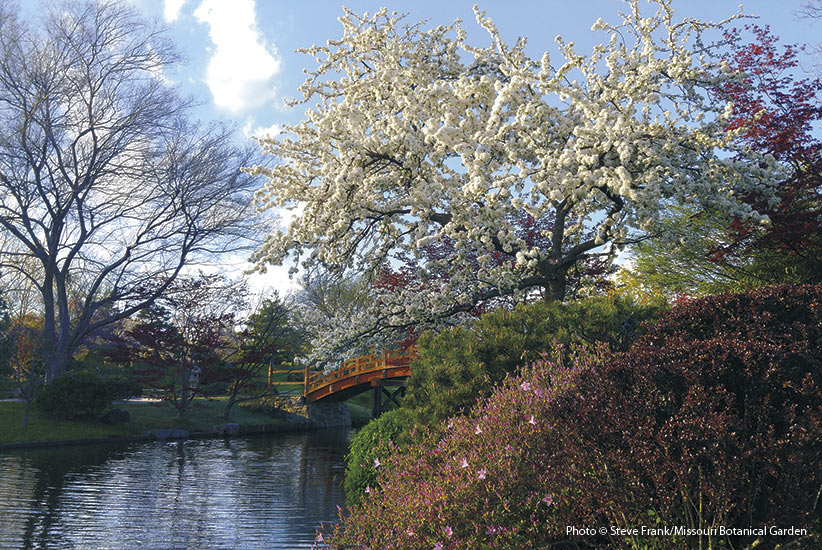
Take in the views
Ben suggests not getting too caught up in the views from within your Japanese garden. Instead, step back and look at it from places where you’ll see it most — the patio, kitchen window, any spot where you frequent — to appreciate its beauty as a whole. Japanese garden design is more about the overall look and fitting all the pieces together to make a harmonious whole.
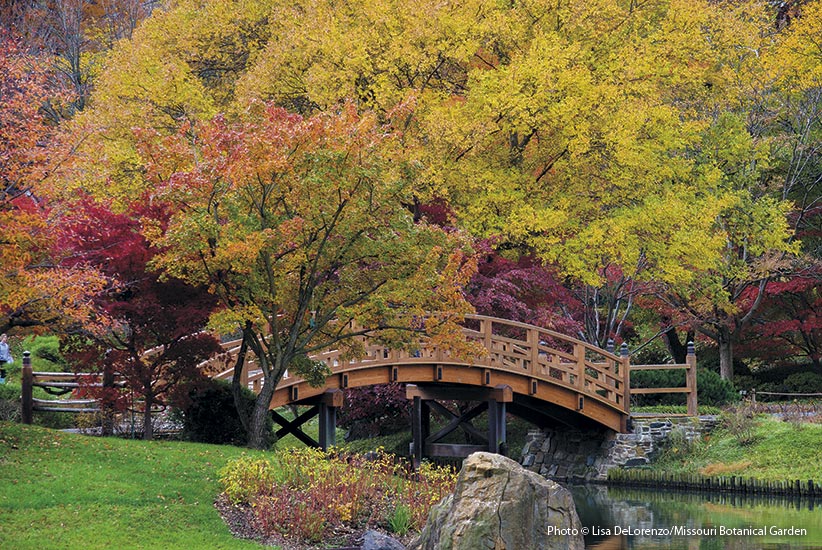
Don't miss the seasonal shows
Flowering trees throughout the garden, such as this crabapple (Malus spp. and hybrids), put on a fabulous spring show. A variety of species and cultivars ensures an extended bloom time. In fall, foliage from Japanese maples (Acer spp. and hybrids) and other trees make this time of year at Seiwa-en an incredible experience, too.
Plants for your Japanese garden
You won’t usually find variegated foliage or unusual flowers in these gardens. Again, it's about the whole planting working together as a whole so the borders are simple and rely on lots of texture though there can be amazing seasonal shows. Ben says that the fall foliage in Seiwa-en is spectacular, but spring is pretty showy, too, with lots of flowering trees. The Japanese iris (Iris ensata) flowers by the bridge in the photo above are a great example of a classic Japanese garden planting. The blooms stand out for a season but the rest of the year their upright foliage softens the hard lines of the of the wooden bridge along the lake’s shoreline.
7 Favorite Japanese garden plants
- Ferns
- Conifers
- Hakonechloa Hakonechloa macra
- Hosta Hosta spp. and hybrids
- Japanese iris Iris ensata
- Japanese maple Acer spp. and hybrids
- Rhododendron Rhododendron spp. and hybrids
Create mystery
One of the classic design principles of a Japanese garden is hide and reveal. You can get this effect with a winding path that has a shrub or tall perennials planted at one of the curves. This screens the view, creating mystery which pulls you along to see what's beyond then when you come around the corner you're surprised by the beautiful view.
You could spend all day wandering Seiwa-en but if you only have an hour or two to enjoy this amazing Japanese garden Ben recommends taking the path that meanders around the lake in the photo. On this route you can enjoy the hide and reveal design that includes numerous vistas that were carefully crafted for discovery along the walk.








